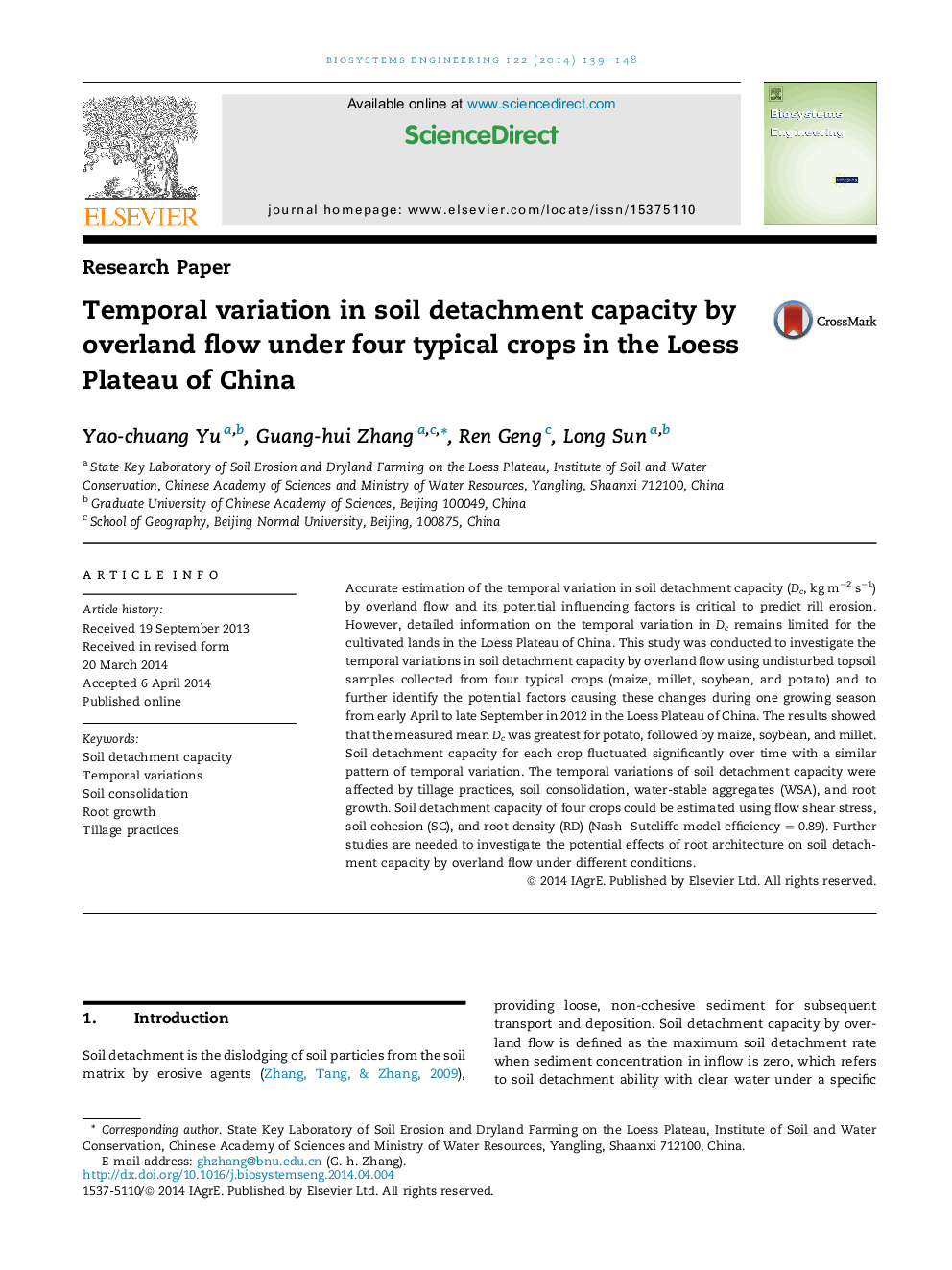| Article ID | Journal | Published Year | Pages | File Type |
|---|---|---|---|---|
| 8055194 | Biosystems Engineering | 2014 | 10 Pages |
Abstract
Accurate estimation of the temporal variation in soil detachment capacity (Dc, kg mâ2 sâ1) by overland flow and its potential influencing factors is critical to predict rill erosion. However, detailed information on the temporal variation in Dc remains limited for the cultivated lands in the Loess Plateau of China. This study was conducted to investigate the temporal variations in soil detachment capacity by overland flow using undisturbed topsoil samples collected from four typical crops (maize, millet, soybean, and potato) and to further identify the potential factors causing these changes during one growing season from early April to late September in 2012 in the Loess Plateau of China. The results showed that the measured mean Dc was greatest for potato, followed by maize, soybean, and millet. Soil detachment capacity for each crop fluctuated significantly over time with a similar pattern of temporal variation. The temporal variations of soil detachment capacity were affected by tillage practices, soil consolidation, water-stable aggregates (WSA), and root growth. Soil detachment capacity of four crops could be estimated using flow shear stress, soil cohesion (SC), and root density (RD) (Nash-Sutcliffe model efficiency = 0.89). Further studies are needed to investigate the potential effects of root architecture on soil detachment capacity by overland flow under different conditions.
Related Topics
Physical Sciences and Engineering
Engineering
Control and Systems Engineering
Authors
Yao-chuang Yu, Guang-hui Zhang, Ren Geng, Long Sun,
